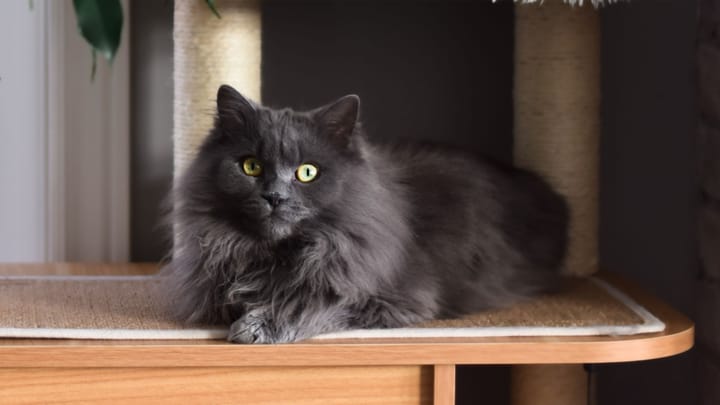Tiffany
Other names : Asian Longhair, Chantilly Tiffany

The Tiffany, a fairly rare breed originating from the UK, is the long-haired version of the English Burmese and the Asian. These cats have a mid-length coat and are blessed with a certain elegance, marrying the calm and serene character of the Persian with the vivacity of the Burmese.
|
Life expectancy |
The Tiffany has a life expectancy of between 12 and 15 years |
|
Temperament |
|
|
Adult size |
Female
Between 10 and 12 in
Male
Between 11 and 14 in
|
|
Adult weight |
Female
Between 13 and 18 lb
Male
Between 13 and 26 lb
|
|
Coat colour
Blue / slate grey, chocolate, sable, lilac, red, cream, tortoiseshell |
Brown Red Cream Black Blue |
|
Type of coat
Mid-length |
Long |
|
Eye colour
Golden yellow, green |
Green
Yellow
|
|
Purchase price |
The Tiffany costs between £230 and £350 |
The Tiffany is not to be confused with another breed whose status is still experimental: the Chantilly. This cat was known as the Tiffany during the 80s, and then later on, the Chantilly-Tiffany in the 90s, before it took its current name.
More details about the Tiffany
Tiffany: Origins and history
In the UK in 1981, Baroness Miranda von Kirchberg’s cats - a European Burmese and a Chincilla Persian - had a litter of kittens. They had the features of a Burmese, but the silver coloring of the Chinchilla Persian, which inspired the Baroness to create the Burmilla breed. The breeding programme then proceeded to develop and other English breeders produced kittens of colours other than silver (chocolate, blue, tabby, etc.), or kittens with long hair, thus creating two new breeds: the Asian (for the short-haired variety) and the Tiffany (for the long-haired variety).
Physical characteristics of the Tiffany
Medium in size, they have a heavy body with a strong frame, ending with a tail that is fairly thick at the base and quite furry. Their legs are thin, with the hind legs being higher than the front ones. Their fur clings to their body and is longer at the collar, belly, breeches and tail. The head is shaped like a short triangle, medium in size, has large cheekbones and a slightly rounded snout. Their eyes are large and well spaced and their ears are medium-sized, broad at the base and rounded at the ends.
Tiffany: Characteristics
Tiffany: Behaviour
Breed compatibility Tiffany
Tiffany: Purchase price
The average purchase price of a Tiffany kitten is between £230 and £350, with this varying depending on the lineage, breeding, age or even the sex. For your monthly budget, you should allow around £25 per month to meet their needs by providing them with a high-quality diet and ensuring you keep them in good health.
Tiffany: Shedding
Average
Although it will increase during malting periods, the hair loss in this breed is generally not very pronounced.
Tiffany: Grooming
Despite the length of their coat, these cats only need a weekly brush since they only have a small amount of woolly undercoat.
Tiffany: Health
The life expectancy of a Tiffany is between 12 and 15 years. Although it’s not uncommon for them to live to be as old as 17.
Since they have little undercoat, these cats are better equipped for temperate climates than cold ones.
Their mid-length coat can often hide a little extra weight. It’s important to ensure that you control their caloric intake and their level of activity.
These cats are fairly robust, but they can have a predisposition to polycystic kidney disease, a hereditary condition originating from the Persian. The disease causes the development of liquid-filled cysts in the kidneys, ultimately causing incurable renal failure. Tiffanies can also develop the same conditions as other cats, such as oral diseases.
Beyond pairings with other Tiffanies, crosses are also allowed with some other breeds - this includes the Asian, the Burmilla and the English Burmese.




